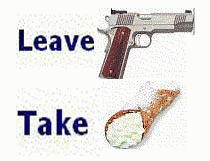Don’t believe Coors and Budweiser—cold temperatures ruin good beer.
Where did this practice of deep freezing beer come from? While the cold neuters tasty beers, it masks the flaws of flavorless macrobrews. So it's no surprise that the corporate brewers who make Budweiser, Miller, and Coors fill their ads with images of frosty mugs, snowy peaks, and bikini-clad babes frolicking improbably in fake snow. Coors Light has invested the most in frigidness, famously deploying the dopey gimmick of erecting mountains on its labels that turn blue when the beer is "cold enough."
Sensory scientists like Sue Langstaff make a living thinking deeply about how our foods and drinks look, taste, and smell. The longtime beverage industry consultant walked me through the science behind why my Pennant Ale went so wrong: Since key aromatic compounds cannot volatilize at lower temperatures, they won't release their scent into the headspace gas above the liquid. Put more plainly, the smell the brewer wants you to experience is muzzled; any fruity or floral character is literally on ice.
Beverages lose carbon dioxide as temperature increases, so the cold also heightens the tingling sting of the carbonation. Frigid temperature is therefore ideal for the thin, tasteless lagers flowing out of large breweries. The big brewers know their beer has little to offer in the way of flavor or aroma, so their marketing stresses ice-cold refreshment. If the drink can't provide taste, at least drinkers can feel something on their tongues when it's hyper-chilled.


0 Comments:
Post a Comment
Subscribe to Post Comments [Atom]
<< Home